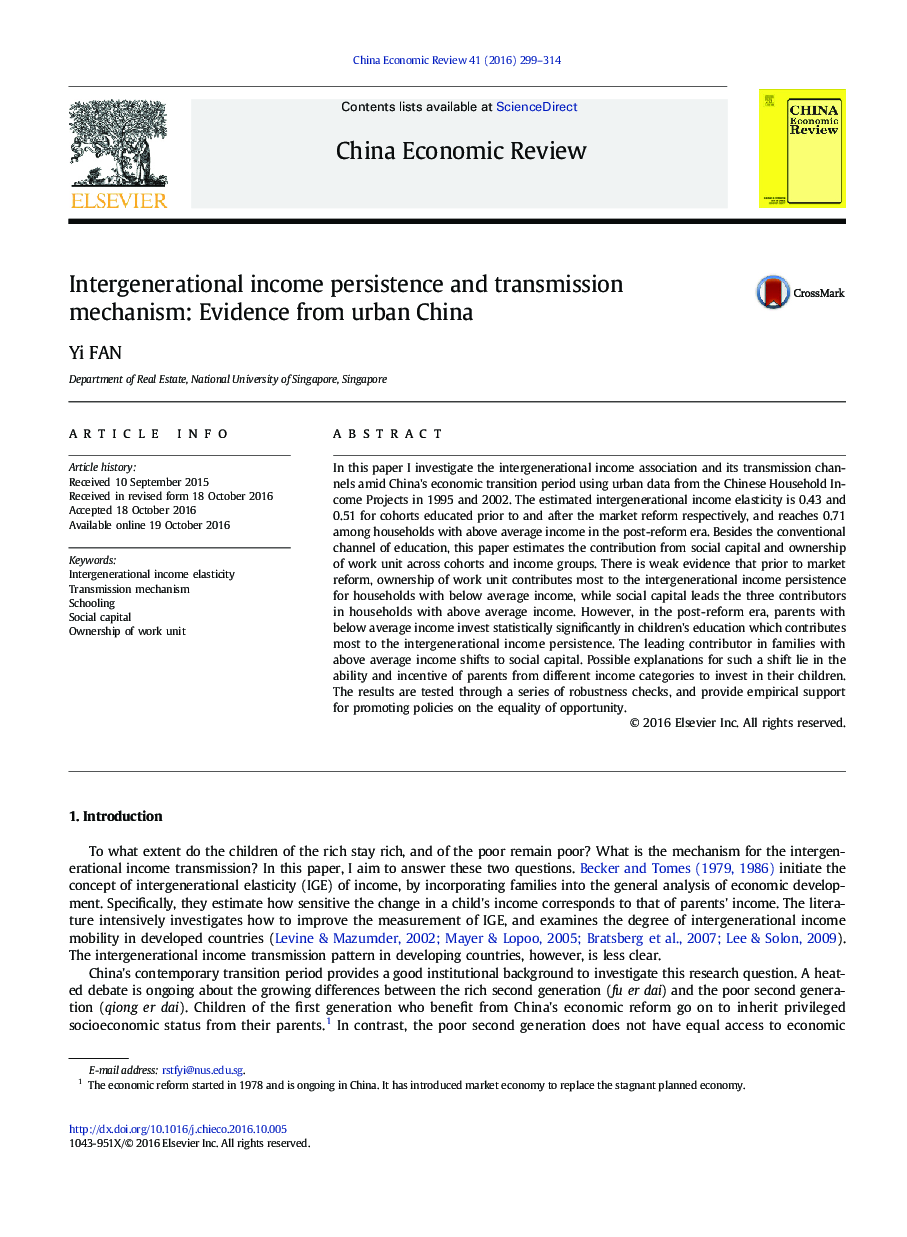| Article ID | Journal | Published Year | Pages | File Type |
|---|---|---|---|---|
| 5047253 | China Economic Review | 2016 | 16 Pages |
•Intergenerational income elasticity raises from 0.43 to 0.51 across market reform.•IGE reaches 0.71 in households with above average income in the post-reform era.•Main channel is education for the poor and social capital for the rich after reform.•Interpretations lie in the ability and incentive of parents to invest in children.
In this paper I investigate the intergenerational income association and its transmission channels amid China's economic transition period using urban data from the Chinese Household Income Projects in 1995 and 2002. The estimated intergenerational income elasticity is 0.43 and 0.51 for cohorts educated prior to and after the market reform respectively, and reaches 0.71 among households with above average income in the post-reform era. Besides the conventional channel of education, this paper estimates the contribution from social capital and ownership of work unit across cohorts and income groups. There is weak evidence that prior to market reform, ownership of work unit contributes most to the intergenerational income persistence for households with below average income, while social capital leads the three contributors in households with above average income. However, in the post-reform era, parents with below average income invest statistically significantly in children's education which contributes most to the intergenerational income persistence. The leading contributor in families with above average income shifts to social capital. Possible explanations for such a shift lie in the ability and incentive of parents from different income categories to invest in their children. The results are tested through a series of robustness checks, and provide empirical support for promoting policies on the equality of opportunity.
